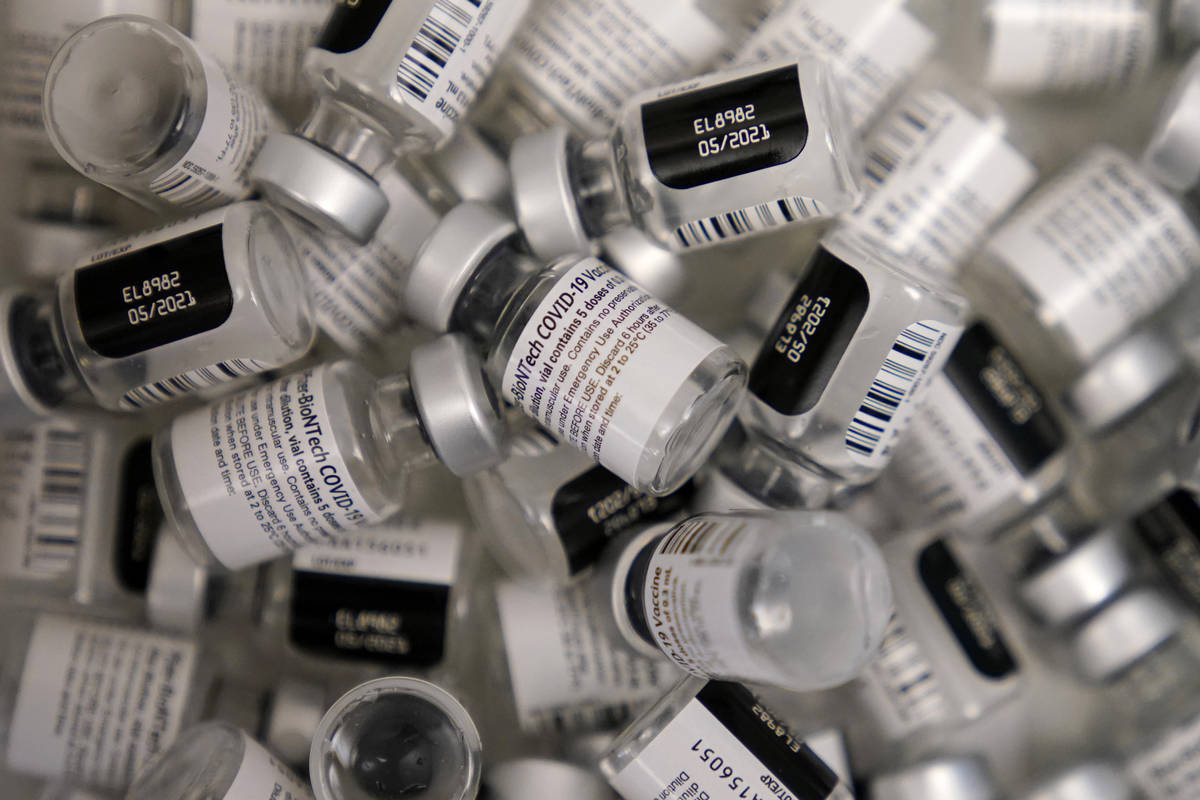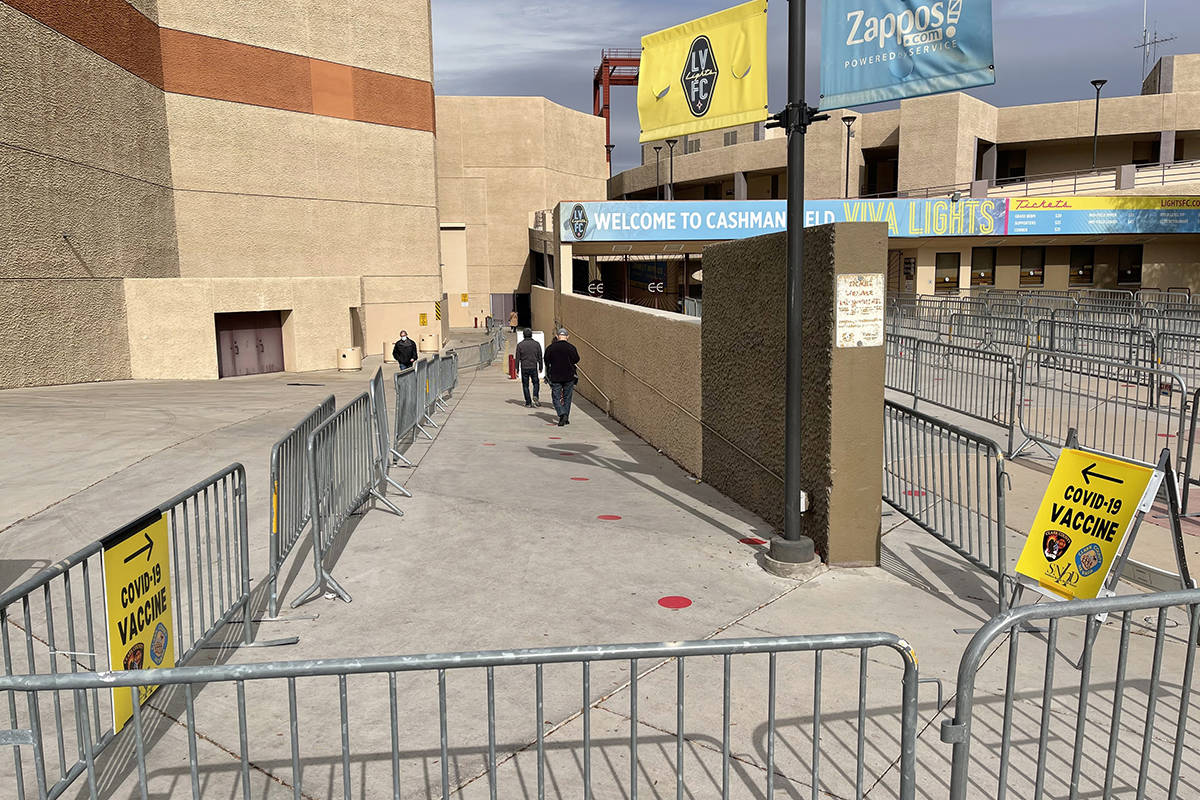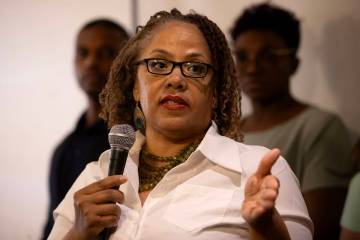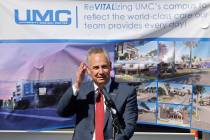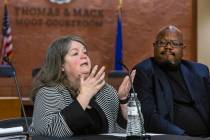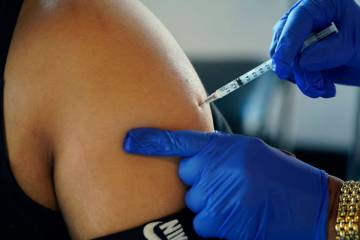Analysis: Nevada getting shortchanged in vaccine dose allocation
Nevada health officials are sending a message to federal agencies allocating COVID-19 vaccines to states: Show us your math.
Questions have dogged state officials since Centers for Disease Control and Prevention data showed Nevada consistently ranking near the bottom of national lists for both receiving vaccine doses and putting shots into arms.
Some federal officials claim Nevada is not ordering its entire allotted capacity. State officials maintain they’ve been shortchanged from the start.
Each state’s vaccine allocation is purportedly proportional to its adult population, but officials have offered conflicting information on what year’s population numbers are being used.
However, a Review-Journal analysis looking at the state’s adult population over the past three years indicates Nevada is allocated doses at a rate significantly less than most other states. Using 2020 population estimates, for example, Nevada was receiving about 2,000 doses less per 100,000 adult residents than the high-ranking state of Vermont.
Nevada COVID-19 response director Caleb Cage said Wednesday that he met with CDC and Federal Emergency Management Agency officials this week about increasing the state’s vaccine allocation. As of Friday he was still waiting to receive a copy of the allocation formula used by the federal government.
“There’s enough, at least from a perception standpoint, that we’re asking a question and saying, ‘We need you to clarify this for us,’” Cage said. “Because if this is not distributed clearly in a way that’s fair and equitable to the state of Nevada, we’re going to address it.”
Nevada Rep. Steven Horsford, D-Nev., said Thursday he and other members of the state’s congressional delegation spoke with White House officials on Wednesday to express their concern about apparent imbalance in allocation.
“This is something that we are working to push the CDC to address and to ensure that Nevada does in fact get our full share and allocation of the vaccines going forward,” he said.
Every week, federal officials make available a new allocation of first and second vaccine doses to states. States then order doses from that allocation to be shipped to them. Any that are not ordered remain in the state’s allocation and can be shipped at a later date.
The CDC also tracks how many doses are “distributed” to states and how many are “administered.” The former term measures how many doses a state has ordered from its allocation, and the latter tracks how many shots have been put into arms.
Nevada has consistently ranked among the worst states at distributing and administering doses per capita, CDC data shows. State and local health officials contend that wouldn’t be the case if they were allocated more vaccine.
Nevada’s most recent weekly allocation of vaccine included 42,625 first doses, an increase of 5,800 compared to the week prior. However, the state now has the infrastructure in place to administer approximately 126,000 first doses per week, Cage said.
Clark County alone can administer 95,000 to 105,000 doses per week, local health officials contended this week. Two mass vaccination sites have been set up, and there are a handful of smaller ones positioned around the Las Vegas Valley.
“We’ve had tremendous response from the community offering everything from public to private locations,” Clark County Fire Chief John Steinbeck said. “But none of it matters without additional vaccine quantities.”
Bottom of the list
Nevada Gov. Steve Sisolak on Sunday wrote a letter to U.S. Department of Health and Human Services officials, questioning why the state was near the bottom of the list for doses distributed to states per capita.
In an email to the Review-Journal this week, an official with the department countered Sisolak’s argument, stating that the state’s actions determined its distribution numbers. While Nevada is ordering its max allocation of first doses as they become available each week, second doses are ordered only as necessary.
“Further, the number of doses that are allocated are based on a pro rata basis by the portion of that state’s population over the age of 18, not the state’s entire population,” the HHS official wrote. “This pro rata formula is consistent across all states and jurisdictions.”
But a Review-Journal analysis of CDC vaccine data and U.S. Census Bureau population data indicates that Nevada has, so far, been shorted in its full allocation.
The news organization calculated the doses allocated to each state per 100,000 adult residents, using population estimates data from 2018, 2019 and projections for 2020. In each analysis, Nevada had one of lowest allocation rates nationwide, ranking alongside other western states including Arizona, Idaho and Utah.
For example, Nevada’s allocation rate using 2020 population projections was about 13,100 doses per 100,000 adult residents. Vermont’s rate was about 15,100 doses per 100,000 adult residents.
“There’s a problem there,” UNLV epidemiologist Brian Labus said. “If we’re using a population-based methodology, you shouldn’t see those differences.”
Washington had distributed about 47 million doses to states as of Wednesday, and 24 million doses had been administered. Nevada had administered more than 224,000 doses as of Thursday.
Federal formula
The federal allocation formula uses data collected during the 2020 census, the HHS official said. The U.S. Census Bureau has not yet made that data available to the public, and the HHS official said his department could not provide it to the Review-Journal.
But its unlikely that adult population numbers for each state would change dramatically enough in one year to bridge the gap between Nevada and states like Vermont, Labus said.
“The difference between the fastest growing state and the smallest growing state isn’t all that much,” he said. “It can’t explain the (allocation rate) differences between states. … They’re not growing that much from year to year that it should matter.”
Congressman Horsford said that White House officials told the state’s congressional delegation that allocations were based on census data tracking states’ “2017-2018” adult population.
States’ weekly vaccine allocations are computed and tracked by the software platform Tiberius, according to a U.S. Department of Defense press release published on Dec. 11. Allocations have reportedly been based on states’ adult resident populations since they began being distributed.
However, former HHS Secretary Alex Azar announced on Jan. 12 that in two weeks the federal government would begin allocating doses based on two new factors. The first would see more doses allocated to states with larger populations of people age 65 and older, and the second would reward states that were more quickly administering shots in their possession.
Its unclear if the change will be made. Virtually every state saw a proportionally similar increase to its allocation of Moderna vaccine doses this week, and only Washington state has seen a decrease in its weekly allocation since Azar’s announcement.
Contact Michael Scott Davidson at sdavidson@reviewjournal.com or 702-477-3861. Follow @davidsonlvrj on Twitter.
Review-Journal staff writers Debra Saunders and Mary Hynes contributed to this report.
Vaccine questions
The State of Nevada has set up a call center to help answer residents’ questions about the COVID-19 vaccine. Residents who have questions are asked to call 800-401-0946. The state says the call center will be available 8 a.m. to 8 p.m., seven days per week to help residents understand the vaccination process in their county.
The Review-Journal also is answering a select number of readers’ questions about vaccines. Questions can be submitted to vaccinequestions@reviewjournal.com. Please provide contact information.



